You might recognise Ivan Booth, and then again you might not.
As hundreds of students partied on Castle St at the height of the St Patrick’s Day celebrations, Ivan moved quietly amongst them picking-up discarded aluminium cans and putting them in sacks.
I’ve seen Ivan a bit over the years, but I approached him a few weeks ago when I saw him lugging this through campus.
He said he wouldn’t mind an interview but had to drop these off first (that was about 40kgs of aluminium cans). He gave me his address, but pointed out he had no phone number.
“You’ll have to try your luck,” he said.
And so I did. He was busy during St Patrick’s Day (and so was I as it turned out), nor was he home when I knocked on the door of his home on Tuesday.
I tried again on Wednesday. I knocked twice, rang the bell and then begrudgingly walked back to my car. But then I turned around and saw Ivan’s head poking through the door of his house on Leith St North. I waved, and he waved back.
Ivan Booth, 79, is one of the few non-students living in the heart of Dunedin’s student quarter, and he couldn’t be more content.
The old villa is one of the area’s original homes, and can be seen in this picture from 1876. (as an aside, you can see the bridge to the Botanic Gardens). His late parents owned the house, and he grew up in the area.
It was not like the area we know today, the mixture of old and new flats filled with bright young things flatting for the first time. Back in the 1950s, when Ivan was growing-up, the area was a “hard-up family area . . . a Labour area”.
“The whole area was a family area.”
He grew-up playing by the nearby Leith, including fishing and in swimming holes.
“It was alive with trout.”
The fabric of that neighbourhood changed when mixed flatting came in. Check out this story from the Critic in 1967, or read more here.
That led to families leaving the area, and the mixed flats taking over.
So what’s it like living in a student area?
“It’s alright but you couldn’t live here with a family,” Ivan, who doesn’t have children and lives alone, said.
That was because of the odd bottle being thrown, and the danger of broken glass underfoot.
Ivan said he had few issues with the students, who were always pleasant to deal with, but there was the odd disturbance when the former pub, the Gardens Tavern, known as ‘Gardies’ used to close, and the pub goers would “gate crash” the parties.
“It has quietened down a bit.”
One trend he had noticed was that students had become “more respectful of recycling”.
Ivan who had been collecting cans, off and on, for decades said he largely did it for “pocket money”.
Nowadays, he gets around $1.60 a kg for the aluminium cans he finds discarded on the streets of his area: Leith St North, Castle, Howe and Dundas St.
“The last few weeks I collected about 100kgs a week.”
When can recycling first started “everybody was doing it”, Ivan said. And that was the same for bottles, but that industry had all but collapsed.
And while people picking up cans in the student area to exchange for cash had come and gone, Ivan had remained.
He told me that he could transport (read: walk) up to 40kgs of aluminium cans on his trolley to Sims Metal, on Wharf St, a couple of kilometres from his home.
Ivan, who previously worked as a heavy canvas worker, said he had no plans to stop picking up discarded cans.
“It gets me out and about.”
Nor does he plan to sell his home or the adjoining property (pictured below) despite the odd visit from real estate agents.
“This is home.”
I thought this was interesting from the Dunedin City Council, which is providing more naming options for some of the city’s newest streets. The council proposes to add the names of nine influential New Zealand women to the Road Naming Register.
DCC Group Manager Transport Jeanine Benson said the first step to adding new names to the register starts with family/whānau consent.
“We are reaching out to family members of each of these women, asking that they come forward and approve their use. Without family consent, we cannot add these names to the register.”
These are the names:
Rachelina Hepburn Armitage (1873-1955)
Yvette Winifred Corlett (née Williams; 1929-2019)
Margaret Cruickshank (1873-1918)
Laura Maria Hayward (1870-1966)
Rachel Reynolds (née Pinkerton) (1838-1928)
Eileen Louise Soper (née Service) (1900-1989)
Mary Ann Wellbourn (1835-1918)
Catherine Redmayne (1825-1869)
Harriet Morison (1862-1925)
Anyone with a family connection to these women are asked to contact DCC Transport staff within the next three months on 03 477 4000 or email transport.regulation@dcc.govt.nz.
Around twenty Māori naming options are currently being reviewed to be included in the register.
I got emailed a press release this morning highlighting the economic impact of the recent Red Hot Chili Peppers’ concert in Dunedin, held at Forsyth Barr Stadium.
Check this out:
28,166 seats were sold for the concert.
The concert attracted more visitors than locals, with 58% of survey respondents residing outside of Dunedin City boundaries.
For attendees from outside of Dunedin, the largest group was from the Canterbury region, while a significant proportion came from the wider Otago/Southland region.
Visitors stayed an average of 1.8 nights and spent an average of $660 per person (excluding ticket price).
That’s the value of the stadium, and I know some people think it is game over when Christchurch builds their facility. Far from it. After the initial Elton John concert, Forsyth Barr Stadium barely had another concert for a few years. The difference came in the form of management, and Dunedin has one of the personable people in the industry in Terry Davies.
He highlighted that business was now picking-up, with the stadium already hosting Six60, and was due to host Rod Stewart with Cyndi Lauper next month.
And I’ll be there on Saturday to watch the Fijian Drua team play. If you don’t know what ‘Drua’ means, it means ‘sacred canoe’.
If you are looking for something different to do this week, check out the events at The Fringe Festival.
Former local lad, James Mustapic, a two time Billy T Award-nominated comedian, is performing, with more information here.
I’m still tempted to look at this for a story. An advert in the Otago Daily Times a few weeks ago.
MAKES YOU THINK…
Also, do you know what this photo is of? Please answer in the comments below:
And now it is time for Tweet of the Week:

And lastly, here is a great song by Snapper to end the newsletter on:





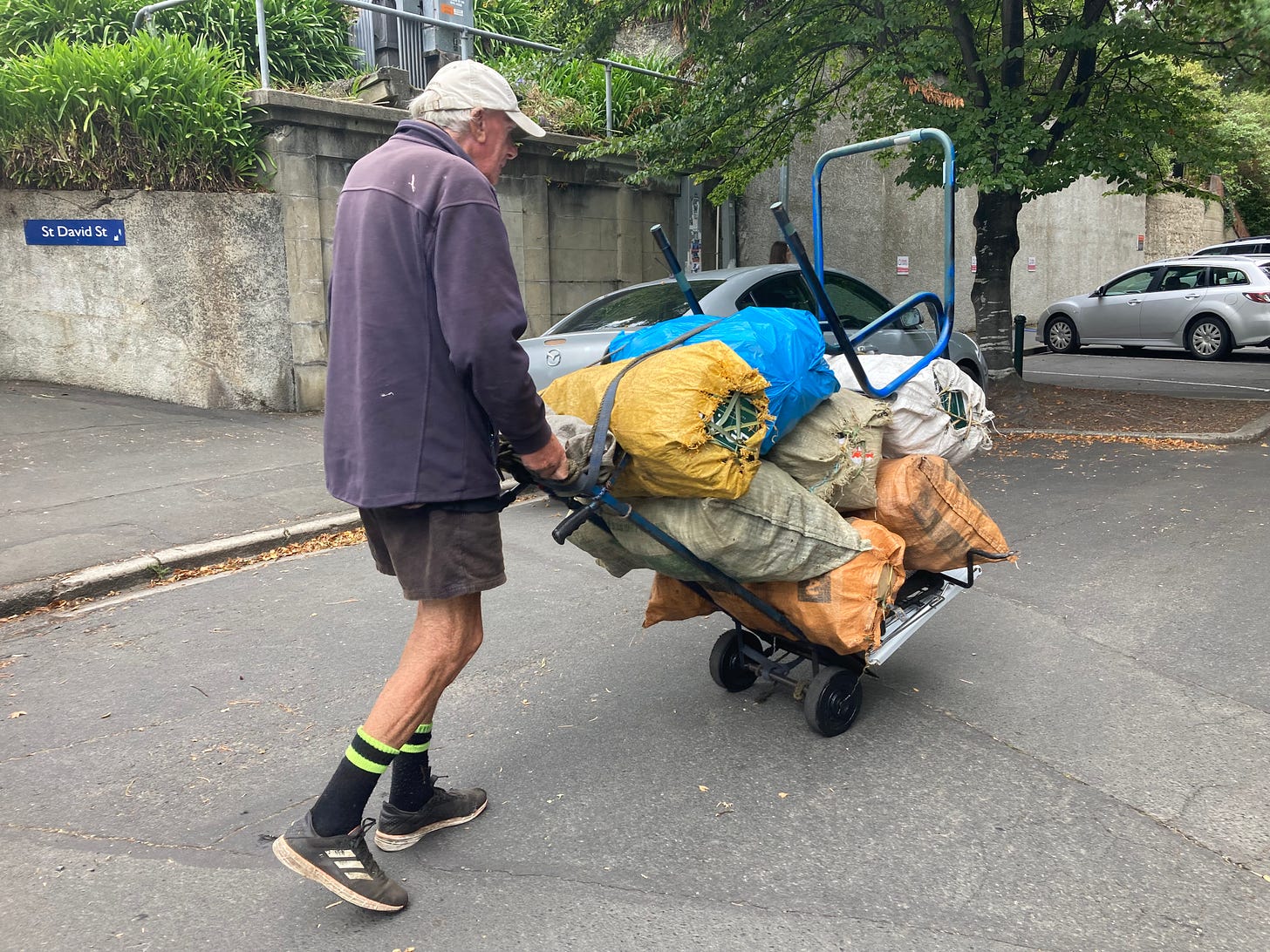

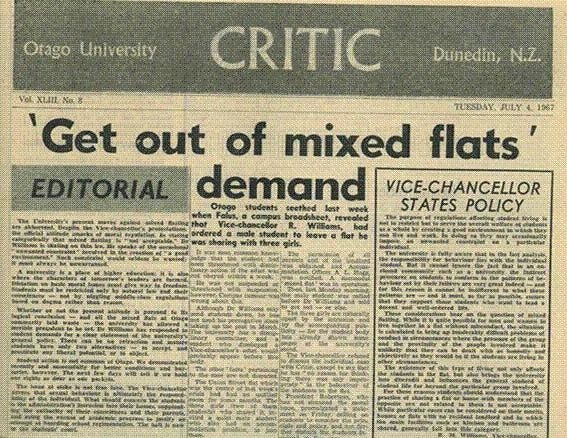


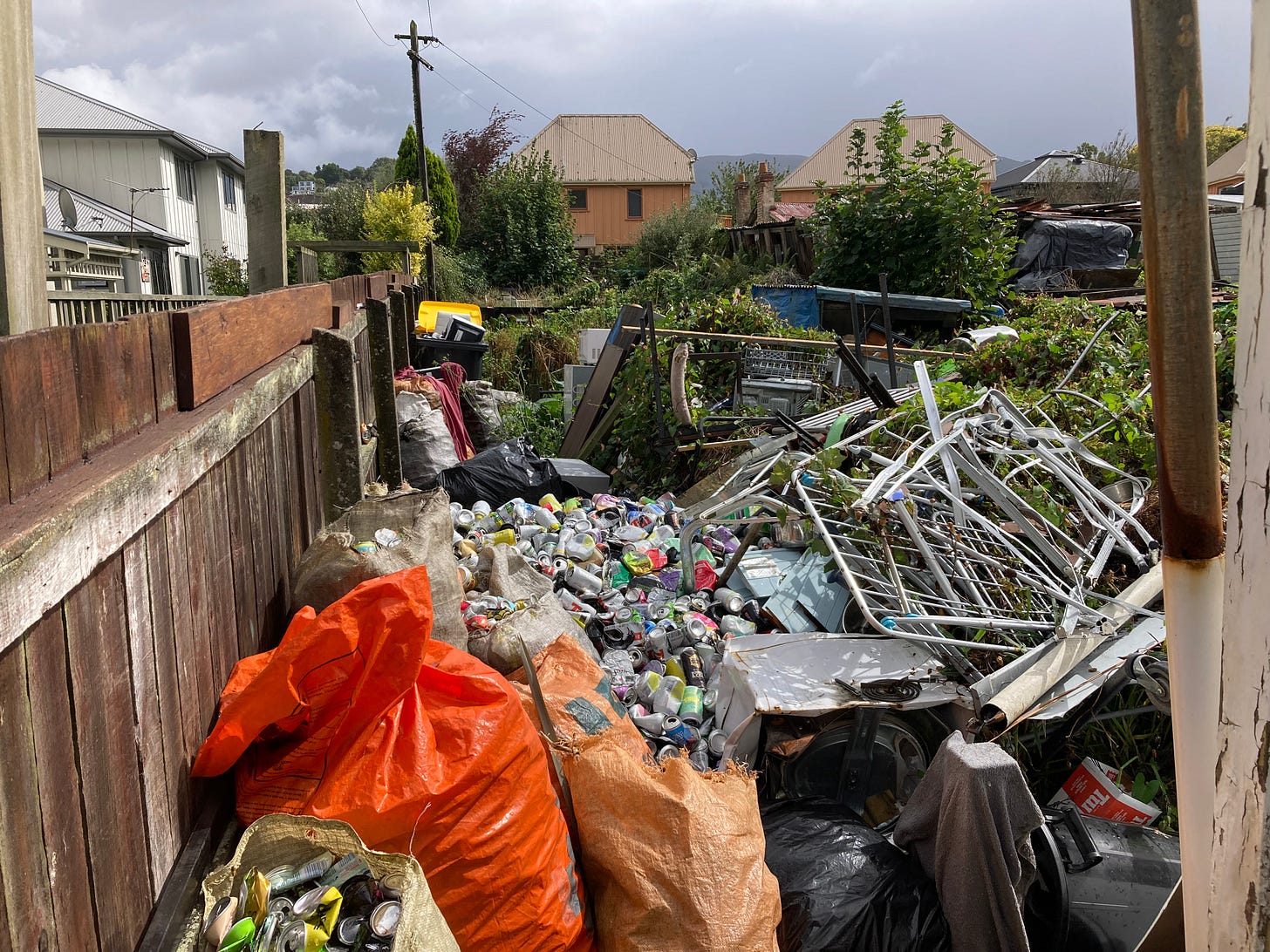

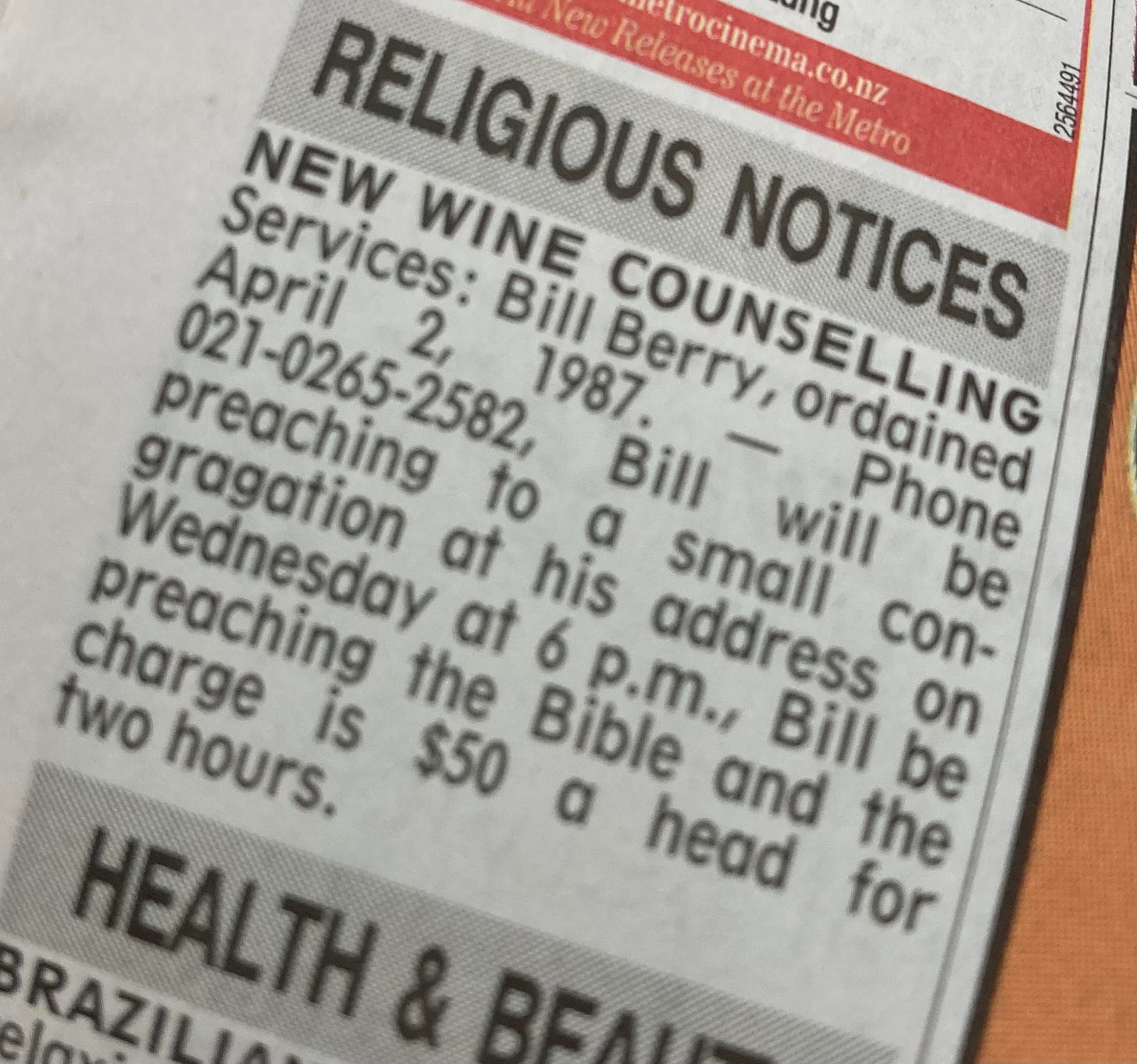
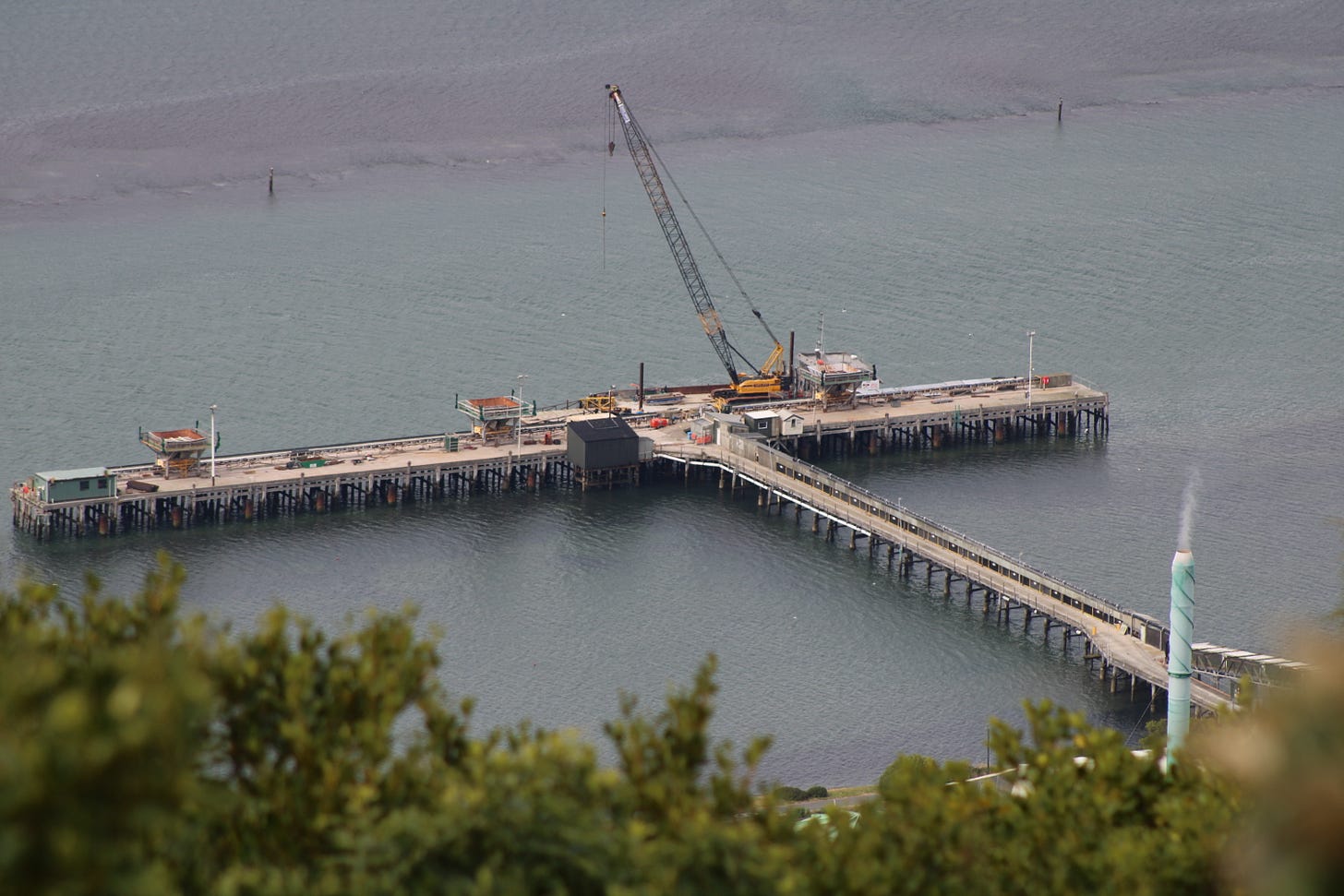
Redevelopment of Ravensdown wharf.